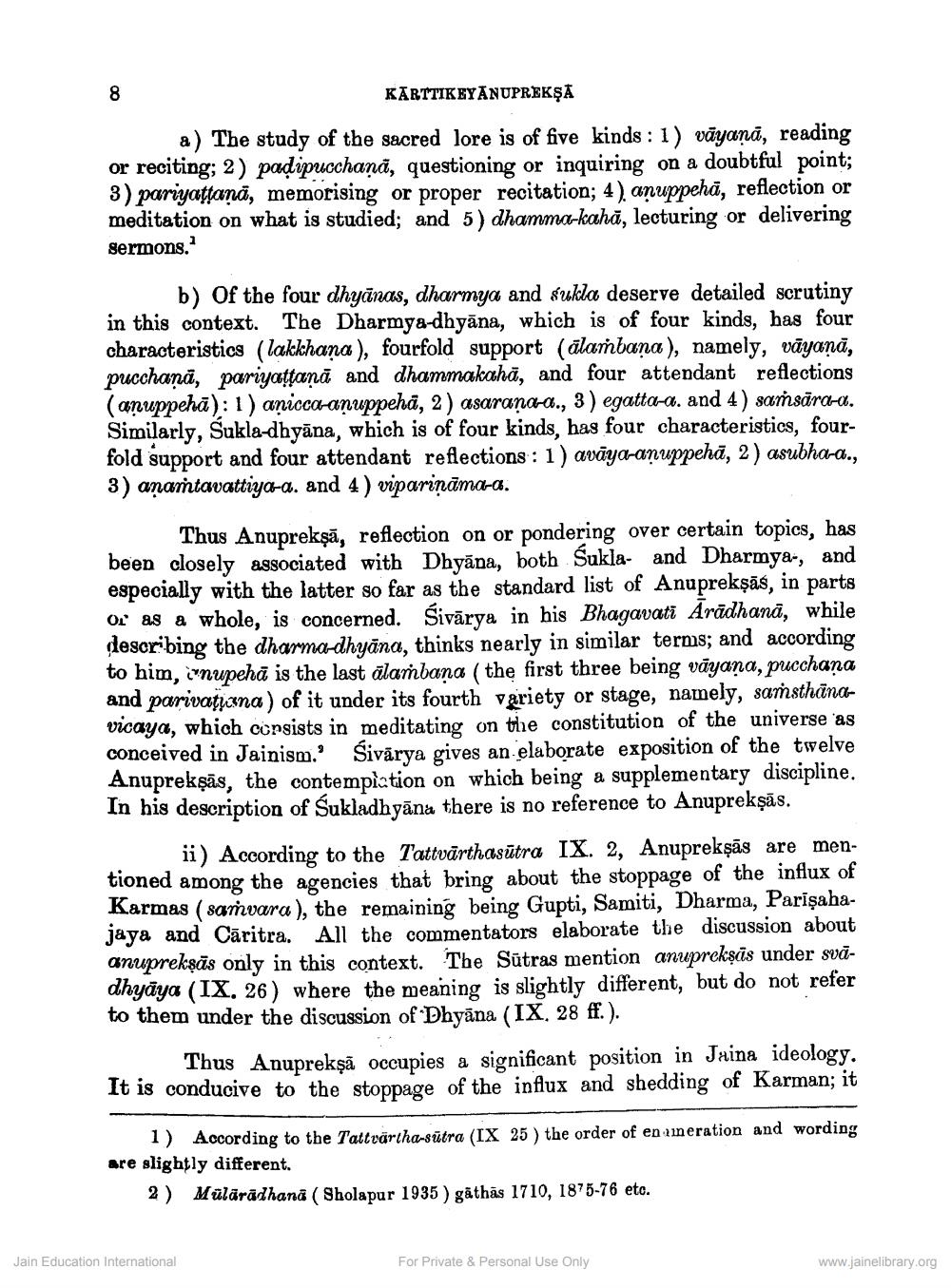________________
8
KARTTIKEYANUPREKŞA
a) The study of the sacred lore is of five kinds: 1) vāyaṇā, reading or reciting; 2) paḍipucchana, questioning or inquiring on a doubtful point; 3) pariyaṭṭana, memorising or proper recitation; 4) anuppeha, reflection or meditation on what is studied; and 5) dhamma-kaha, lecturing or delivering sermons.1
b) Of the four dhyanas, dharmya and sukla deserve detailed scrutiny in this context. The Dharmya-dhyana, which is of four kinds, has four characteristics (lakkhana), fourfold support (alambana), namely, vāyaṇā, pucchana, pariyaṭṭana and dhammakaha, and four attendant reflections (anuppeha): 1) anicca-anuppeha, 2) asarana-a., 3) egatta-a. and 4) samsara-a. Similarly, Sukla-dhyana, which is of four kinds, has four characteristics, fourfold support and four attendant reflections: 1) avaya-aṇuppehā, 2) asubha-a., 3) anamtavattiya-a. and 4) vipariņāma-a.
Thus Anuprekṣa, reflection on or pondering over certain topics, has been closely associated with Dhyana, both Sukla- and Dharmya-, and especially with the latter so far as the standard list of Anuprekṣās, in parts or as a whole, is concerned. Śivarya in his Bhagavati Ārādhanā, while describing the dharma-dhyana, thinks nearly in similar terms; and according to him, nupeha is the last alambana (the first three being vayana, pucchana and parivationa) of it under its fourth variety or stage, namely, samsthānavicaya, which consists in meditating on the constitution of the universe as conceived in Jainism.' Śivarya gives an elaborate exposition of the twelve Anuprekṣās, the contemplation on which being a supplementary discipline. In his description of Sukladhyana there is no reference to Anuprekṣās.
men
ii) According to the Tattvarthasutra IX. 2, Anuprekṣās are tioned among the agencies that bring about the stoppage of the influx of Karmas (samvara), the remaining being Gupti, Samiti, Dharma, Parīşahajaya and Caritra. All the commentators elaborate the discussion about anuprekṣas only in this context. The Sutras mention anuprekṣās under svādhyaya (IX. 26) where the meaning is slightly different, but do not refer to them under the discussion of Dhyana (IX. 28 ff.).
Thus Anupreksa occupies a significant position in Jaina ideology. It is conducive to the stoppage of the influx and shedding of Karman; it
1) According to the Tattvärtha-sutra (IX 25) the order of enameration and wording are slightly different.
2) Mülārādhana (Sholapur 1935) gathās 1710, 1875-76 etc.
Jain Education International
For Private & Personal Use Only
www.jainelibrary.org




